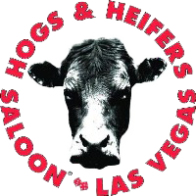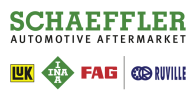We made it through major shopping events like Black Friday and Cyber Monday. Still, holiday shoppers are hitting online stores at high rates, and many e-commerce business owners are seeing unprecedented profits. Why aren’t you one of them?
If you aren’t putting much effort into your product photography, therein lies your answer. About 75% of online shoppers make their purchasing decisions based on product shots. If your product shots are low in quality, you’re probably losing both their trust and their interest.
If you’re ready to revamp your online business, it’s time to learn about the types of product photography and when to use them. Read on to learn from a true expert.
Individual vs. Group Photos
When you’re deciding how to display a product in a photo, a great place to start is deciding between individual and group product shots. As you might expect, an individual product shot features one specific product from your line. Group shots include two or more of your products displayed together.
Unless you’re selling a bundle of products, you should always use individual shots for product listings. It keeps the entire focus on the product you’re selling and prevents viewers from getting confused about what’s for sale.
Group shots can make great headers for your website, e-commerce page, or product page. They work nicely for social media posts, printed advertisements, and other materials designed to promote your brand as a whole.
Photography Styles Based on Size
When working with a photography expert, you can rest assured that they’re using the right methods and settings to capture products of different sizes. Why does size matter in product photography? Let’s take a look.
Regular (aka Normal)
When we’re talking about a regular-sized product, we mean anything that doesn’t require extra preparation or specialty technology to capture. This can be anything from a laptop computer to a sweatshirt to an armchair. Products in this category are easiest to shoot using DIY methods, although you’re going to miss out on the lighting, styling, and nuance that a product photographer would bring to the table.
Large
When you’re capturing a product that can’t exactly fit into a traditional studio, you’re almost definitely going to want to work with an expert. Large scale product photography applies to everything from cars and trucks to large furniture and real estate. Large product photography is often taken at the whim of natural lighting and less environmental control.
Micro
How can you best display the diamonds in a wedding band, the speaker in an earbud, or the delicate design work on a blouse? Micro photography is designed to display products at a larger-than-life scale so viewers can appreciate even the smallest details. This type of product photography requires a powerful lens, the perfect contrast, and careful lighting to pull off.
Scale
The best product photography seeks to recreate the real, tactile experience of in-person shopping as much as possible by creating realistic expectations. If size is an important deciding factor for your product, providing at least one photo that shows scale can help. A product photographer can help you pick and display the perfect secondary items or props to create scale and give your shoppers confidence that they know what they’re buying.
Using Props in Product Photography
How you arrange your product will have a big impact on the end result. There are many types of product photography utilizing different backdrops and props to show off your product in the best light possible.
Flat Lay
Flat lay photography provides a bird’s eye view of your products and gets its name from the way products are displayed: laying flat on a horizontal surface. This is a popular choice for clothing and accessories like belts and watches. This style of e-commerce photography is currently popular thanks to its minimalism that can easily pair with eclecticism.
White Background
When you scroll through e-commerce platforms like Amazon, you’ll see white background product photography above all else. By placing your product in front of a white background, you create simplicity and contrast while removing all other distractions. A white background can give your product the appearance that it’s floating and is ideal for web pages with white backgrounds of their own.
Mannequin or Model
When you’re in the business of selling apparel, it’s a good choice to take at least some product photos on a mannequin or model. Mannequins are budget-friendly and show how garments hang on the body without creating distractions. Models are ideal if you’re looking for more of an organic-looking action shot or want to show a garment on different body types.
Social Media
Almost half of Americans have purchased at least one product through social media. When you’re creating listings or advertisements for a social platform, you’re going to want to show a little more creativity and branding. Social media-style product photography is a wide umbrella that encompasses things like bright graphics, eclectic staging, lifestyle appeal, and, of course, quality.
360
360 product photography is increasing in popularity and many online shoppers now expect to find it in product listings. 360 product photos are taken from every angle of a product. That way, consumers can recreate the experience of turning a product over in their hands and examining it inch by inch before making a purchase.
Lifestyle and Process Photos
Professional photographers understand the importance of lifestyle and process photos. Both evoke emotion and desire.
A lifestyle photo shows a product in use. It could be a woman taking a walk while wearing a fitness watch. It could be a family making memories while sitting on a sofa.
A process photo shows how a product came to be. It could be a garment being sewn with needle and thread. It could be a cookie getting drizzled with chocolate.
These types of product photos work best for social media campaigns or print ads. Incorporating them into listings is a great idea, but they should never the first or only photo on your listing because they tend to obscure important details of the product.
Use the Right Types of Product Photography and Boost Business
If you’re not seeing a boost in sales this holiday season, it’s time to review your product photography. By utilizing the right types of product photography and working with a professional, you can better showcase your work.
With a Hollywood background, Glenn Student of Emerald Motion Pictures has the photography skills and experience to bring your products to life. Contact us to discuss the product shots you have in mind.
























